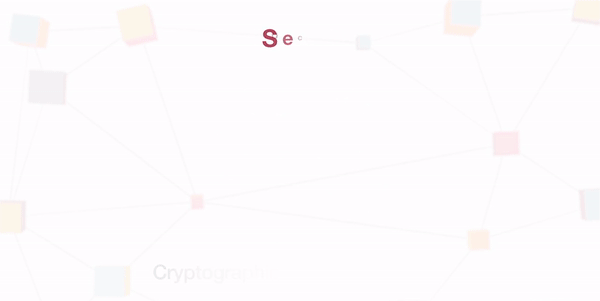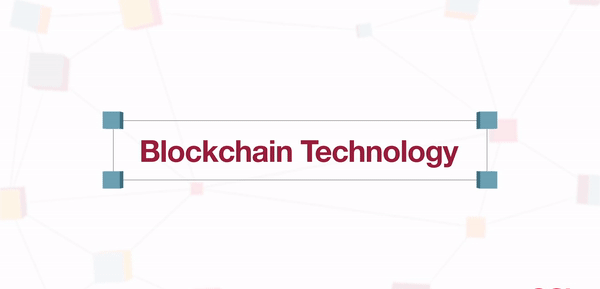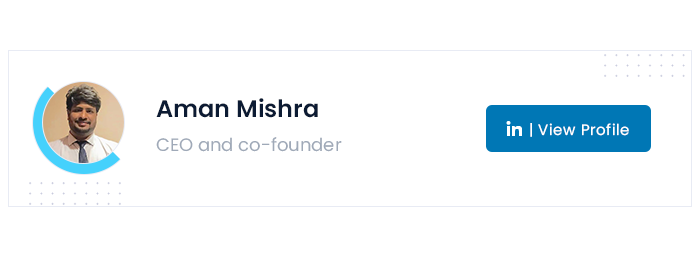Blockchain is a technology that entered the market with a purpose to find proven solutions to structural things security, speed, and efficiency.
But before moving to the direct discussion about what Blockchain is and how it works, let’s look at various stats and facts regarding this powerful technology.
Stats and Facts about Blockchain
- By 2024, the entire Blockchain market is predicted to be worth more than 20 billion dollars. (esparkinfo.com)
- According to Accenture, banks can save more than 8 billion dollars per annum if they use blockchain technology in their transactions.
- As per Capgemini, educational institutions are embracing blockchain technology to avoid certificate frauds and to maintain records of student data.
- Around 13% of the senior IT companies talk about their plans of investing in blockchain as per IDG connect.
So, these were some of the interesting stats and facts that could help someone to understand the popularity and importance of blockchain.
What is Blockchain?
Blockchain is a chain of blocks that are composed of digital pieces of information. Blocks are entities that store information related to the followings;
- Transactions
- About the person participating in transactions
- Sensitive information that distinguishes between different blocks. Alongside, It stores a hash code that allows it to tell it apart from other blocks.
Each of these blocks of data is secured and connected with each other using cryptographic principles.
The Three Pillars of Blockchain Technology
Three main pillars of this amazing technology which have helped it gain widespread acclaim are as follows:
- Decentralization
- Transparency
- Immutability
What does Decentralized Network mean?
A decentralized network means that there is no real owner or everyone is an owner. The Internet itself is an example of a Decentralized Network. The Internet is basically an International Network and it is the most popular example of decentralization after blockchain.

Transparency
Yes, it is true that personal information is kept secure on the blockchain. But this popular technology is almost always open source. In other words, users can modify the code according to the requirements with the help of the amazing computational power of blockchain technology.
This technology has millions of computers on its network, hence it is not possible to make a change without the approval of other authenticated people in the blockchain network.
It is nothing big. It is just a permanent digital ledger that is shared among all the participants in a Blockchain network and this property makes this technology completely transparent.
Immutability
Immutability is the permanent nature of Blockchain-based networks. Every block has the information stored in it. If someone tries to modify the information, the updated information is saved in a newly edited version with a different hash code which means the original version would still be there. You can always see how many modifications have been done in the original info and by whom.
Next thing is that it is impossible to remove a record or information in a blockchain and this is what we call Immutability!
How Does Blockchain work?
Since we have discussed blockchain in the earlier section, you might have imagined something about how it operates. Blockchain is a spreadsheet that contains the information of every particular transaction and each transaction generates the hash code. While talking about the work process, Blockchain works in a simple process that includes blockchain nodes, miners and blocks.
Blocks: A Block in a blockchain network is just like a page in a ledger. Every time a block is created, it gives way to the next block in the blockchain. In other words, a block is a permanent store of a record/information that cannot be tampered for the entire life. Moreover, a block can be thought of as a link in a chain. It has parts or all of the records of the transactions that preceded it.
Miners: Miners check the accuracy of new transactions and record them on the blockchain. On average, users mine a block every 10 minutes. Miners face strong competition while solving a difficult mathematical problem based on a cryptographic hash algorithm. And the solution that comes out is termed as proof of work. This proof shows that a miner has spent a lot of time and resources to resolve the issue.
Nodes: Nodes are a critical part of a blockchain’s infrastructure. Without nodes, blockchain data would not be accessible. Blocks are stored on nodes. Nodes can be any device such as computers, laptops or bigger servers. Moreover, all nodes on a blockchain are connected to each other and they constantly exchange the latest blockchain data with each other. Hence, all nodes stay up to date.
Any blockchain network operates in a similar way. Let’s take an example of the blockchain network of student records in an educational institute.
Since it is a blockchain network, all the student data is shared across all the authorities requiring the information. If somebody wants to tamper the information of a student, it will notify all the authorities and will ask them for their approval. Hence, it is not possible to tamper the information on a blockchain network. Since it is present in the form of a permanent ledger, it is not possible to delete any record.
This way of working makes the Blockchain network a secure, fast and efficient network to store, manage and transfer any kind of sensitive information/data belonging to almost any business.
What Makes a Blockchain Secure?
Blockchain is a distributed permanent ledger that maintains the information. Two things make a blockchain secure. First is its permanent nature or immutability. It means once a record is listed, it cannot be removed at any cost.
Yes, it can be modified but all the authorities should agree with the modification. Also, the edited version will be given another hash code and it will be stored with the previous original version of the record. Hence, it is impossible to remove a record from the blockchain.
Another thing that makes it secure is its shareability. It is shared with all the authorized people in the blockchain network. So, if a person tries to either create a new record or modify a certain record, it will first notify all the authorized people in the blockchain network and simultaneously it will ask for the approval. Hence, Blockchain is secure enough to be used in different sectors of the business whether it is education, healthcare, finance, etc.
Popular Applications of Blockchain Technology
Cryptocurrency
Bitcoin became popular just because of its speed, accuracy, and efficiency. Bitcoin has acquired all these properties from Blockchain technology.
Smart Contracts
Smart Contracts is a computer code that can be created with the help of blockchain to facilitate, verify or negotiate a contract agreement. Smart code operates under a set of conditions that users agree. Whenever those conditions are fulfilled, the terms of the agreement are automatically carried out.
Implementing Blockchain in Mobile Applications
Effective blockchain integration requires specialized mobile expertise—whether through intuitive app design in Atlanta for crypto wallets, an app development company in Chicago building smart contract interfaces, or Android app development in Dallas optimizing for enterprise blockchain solutions. The right technical execution makes decentralized technology accessible.
Future Aspects of Blockchain technology
Blockchain continues to have a vast impact on industries and benefiting them through various improvements and revolutionary changes.
Electronic medical records
In the present scenario, electronic medical records are put in large data centers. Since this information is centralized, there can be problems caused by data breach. In a blockchain network, all these medical records are shared among hospitals, doctors and regulators.
Moreover, when a new record is added to this shared ledger, everyone having the authorized access to this blockchain network is notified.
Cross border transactions
Banks are always looking for a better solution to manage their Nostro and Vostro accounts. Both of these accounts are used to make foreign trade and exchange more convenient.
With the help of Blockchain technology, banks can solve this reconciliation problem in a simple way. Blockchain automated the reconciliation process and this is how it has helped Banks.
Global trade
In global trade, it is generally seen that the cost of documentation comes around one-fifth of physical transportation costs. And the main reason behind this fact is that various supply chain participants such as banks, insurers, border agents, customs and manufacturers depend on different systems for processing transactions.
Blockchain connects all the participants in the supply chain. They will always stay updated with the latest changes. On a blockchain-based network, it is quite easy to perform transactions. So, ultimately blockchain network comes out to be a working solution to reduce documentation cost in Global trade.
Food industry
Blockchain technology can be used in the food industry to encourage speed, accuracy, and efficiency of the record-keeping system involved in supply chain management. With Blockchain, it is possible to have a permanent record of food origin, processing data and shipment details.
In this way, blockchain technology helps the food industry to have secured sharing of permitted data through an efficient food supply chain solution. If someone tries to alter the food item, the blockchain network recognizes it and notifies it to the producer before it reaches a retailer.
Advantages and Disadvantages of Blockchain
Let’s first talk about the advantages of Blockchain. The first and foremost benefit of this amazing technology is that it is a completely transparent technology. Everyone on the blockchain network knows what changes are being done in the records and when and who did the change. Everything is known to all the people in a blockchain network.
Other important advantages are mentioned below:
- All the transactions that occur in a blockchain network are secure, private and highly efficient.
- It’s a decentralized network. It means it has no real owner.
- There is no third party verification in a blockchain network
- No human involvement. Hence, a blockchain network is free of human error.
Now, since we have looked at the advantages. Let’s have a look at certain disadvantages of Blockchain.
- Significant technology cost is associated with mining bitcoin.
- Blockchain performs low transactions per second.
- Blockchain has a bad history of being used in illegal activities.
- It is more prone to hacking.
Conclusion
I hope that now you have got a clear idea about blockchain and how it works. Blockchain is a digital ledger shared with multiple people in the network. Several industries such as Food, Healthcare, Banking, and others can use this technology to resolve issues present in their system. If you have an idea for blockchain app development, you can reach out to us for more details. We are a leading blockchain app development service provider in India, USA, and UAE, Kuwait, Saudi Arabia and Bahrain and have been serving our customers in the technology for years.










